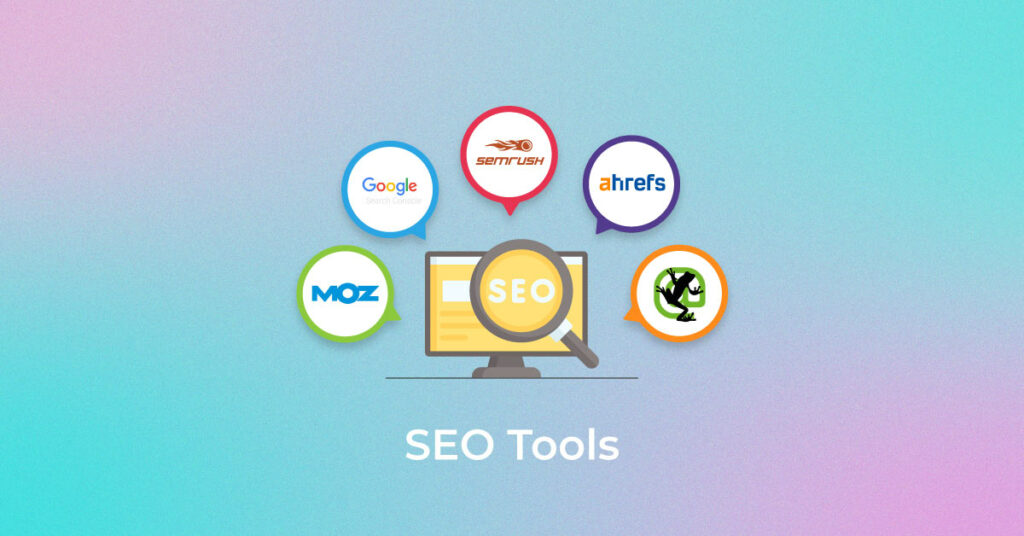Audit Insights: Deep-Dive Analysis for Unveiling the True Potential of SEO
Wiki Article
SEO Vs. SEM: Comprehending the Trick Distinctions
SEO, which stands for Search Engine Optimization, concentrates on enhancing a site's visibility and natural ranking on search engine results web pages. On the other hand, SEM, or Look Engine Advertising and marketing, includes paid advertising to boost a site's presence on search engines. Recognizing the essential distinctions between Search engine optimization and SEM is important for businesses looking to maximize their online existence and drive traffic to their web sites.
Meaning of SEO
SEARCH ENGINE OPTIMIZATION, or Seo, describes the method of enhancing web sites to enhance their exposure and rankings on online search engine results pages (SERPs) It involves numerous strategies and approaches intended at enhancing organic, or non-paid, traffic to a website. The best objective of SEO is to enhance a website's online presence and attract even more targeted site visitors.One of the key facets of search engine optimization is keyword optimization (http://business.bigspringherald.com/bigspringherald/news/article/marketersmedia-2023-12-3-linkdaddy-announces-agency-backlink-local-business-directory-listings-service). This involves carrying out detailed study to recognize pertinent key phrases that customers are most likely to browse for when searching for information or products connected to a certain web site. By incorporating these keywords purposefully into the website's web content, meta tags, and URLs, SEO intends to enhance the website's importance and ranking for those specific search terms
An additional essential variable in search engine optimization is on-page optimization. This involves enhancing various components on a site, such as title tags, headings, photos, and interior links, to make them more search engine-friendly (seo). By making certain that these aspects are properly structured and pertinent to the website's web content, SEO assists internet search engine comprehend the context and importance of the site
In addition, SEO likewise consists of off-page optimization techniques, such as link structure. This involves obtaining high-grade backlinks from various other reputable web sites, which shows to online search engine that the site is authoritative and trustworthy. By developing a solid network of back links, SEO boosts a website's trustworthiness and enhances its chances of ranking higher in search outcomes.
Interpretation of SEM
SEM, or Internet Search Engine Marketing, is an advertising method that entails advertising websites and increasing their exposure through paid advertising on online search engine results web pages (SERPs) Unlike search engine optimization, which concentrates on maximizing internet sites to boost natural search positions, SEM makes use of paid advertising and marketing to drive website traffic to a website.One of the key components of SEM is pay-per-click (PAY PER CLICK) advertising and marketing. With pay per click, marketers proposal on search phrases that are pertinent to their target market. When a customer look for those key phrases, the ads appear on top or side of the search results. Marketers just pay when a customer clicks on their ad, therefore the term "pay-per-click."

SEM additionally consists of other forms of paid advertising and marketing, such as screen ads, remarketing advertisements, and purchasing ads. Present advertisements are banners or visual advertisements that show up on sites within the Google Present Network. Remarketing advertisements target users that have previously seen a web site, serving them advertisements as they search various other sites. Shopping advertisements, on the other hand, advertise particular items and show relevant info, such as price and schedule.
Objectives of Search Engine Optimization and SEM
The objectives of both search engine optimization (SEARCH ENGINE OPTIMIZATION) and online search engine marketing (SEM) focus on raising a site's presence and driving targeted traffic. Nonetheless, the methods and methods used by each differ substantially.The primary goal of search engine optimization is to improve a site's natural search position on search engine results pages (SERPs) This is accomplished by maximizing numerous elements on the site, such as material, meta tags, and website framework, to make it more relevant and attractive to online search engine. By doing so, search engine optimization intends to bring in even more natural traffic from users actively looking for relevant keywords or topics.
On the other hand, SEM concentrates on enhancing a site's exposure with paid marketing on online search engine. The main goal of SEM is to drive targeted web traffic to a web site by bidding on key phrases and showing ads in online search engine results. This approach allows businesses to get to a broader target market quickly and properly.

Secret Elements of Search Engine Optimization
To effectively execute SEO, it is essential to recognize the essential elements see that add to boosting a website's organic search ranking. These components can be extensively categorized into on-page aspects and off-page variables.On-page factors refer to the elements that are directly existing on a website and can be optimized for better search engine exposure. This includes the site's material, key phrase use, meta tags, URL structure, page titles, and headings. By enhancing these aspects, online search engine can much better comprehend the significance and context of the site's material, leading to higher rankings.
Off-page elements, on the other hand, focus on outside signals that affect an internet site's authority and credibility. This includes backlinks from other reliable web sites, social media sites signals, and online mentions (https://dailysportsclub.com/news/linkdaddy-announces-agency-backlink-local-business-directory-listings-service/458323). The more high-grade and pertinent backlinks a web site has, the much better its opportunities of rating greater in search engine results web pages
Additionally, user experience is an important component of SEO. seo optimization. Look engines focus on web sites that use a favorable individual experience, including quick loading times, mobile-friendliness, and easy navigation
Trick Elements of SEM
In comparison to search engine optimization, SEM encompasses a distinctive set of key elements that concentrate on paid marketing and driving instant exposure in search engine results. These parts consist of online search engine marketing, also recognized as pay-per-click (PAY PER CLICK) marketing, keyword research, advertisement production, and campaign management.Internet search engine marketing is a vital element of SEM. It involves bidding process on key phrases relevant to your organization and developing text or display screen ads that will show up in search engine results when those search phrases are browsed. With search engine marketing, you can target specific demographics, places, and also time of day to reach your preferred target market.
Keyword research is one more vital element of SEM. It entails identifying the search phrases that your target audience is utilizing to look for solutions or products similar to your own. By performing extensive keyword study, you can optimize your ads and guarantee they are revealed to the right people at the correct time.
Advertisement creation is the process of establishing persuasive and compelling advertisements that will certainly entice users to click on them. Well-crafted ads have a solid call-to-action, pertinent messaging, and a clear worth proposition.
Finally, campaign administration entails surveillance and optimizing your SEM campaigns to ensure they are carrying out successfully. This consists of monitoring metrics such as click-through prices, conversion prices, and return on financial investment (ROI) to make data-driven choices and attain the best results.
Final Thought
Finally, SEO and SEM are 2 distinct methods in electronic marketing. Search engine optimization concentrates on optimizing web sites to improve organic search rankings, while SEM includes paid advertising and marketing to increase exposure on internet search engine results pages. Both techniques have their very own purposes and key elements that add to their performance. Understanding the differences in between search engine optimization and SEM is crucial for companies to establish a thorough internet marketing method.SEO, which stands for Look Engine Optimization, concentrates on boosting an internet site's presence and natural position on search engine results web pages. On the other hand, SEM, or Search Engine Marketing, entails paid advertising and marketing to raise an internet site's presence on search engines (seo marketing).SEO, or Look Engine Optimization, refers to the technique of enhancing sites to improve their visibility and positions on search engine results web pages (SERPs)The main objective of Search engine optimization is to enhance a site's organic search position on search engine results pages (SERPs) SEO concentrates on enhancing sites to improve natural search rankings, while SEM involves paid advertising and marketing to boost visibility on search engine results web pages
Report this wiki page